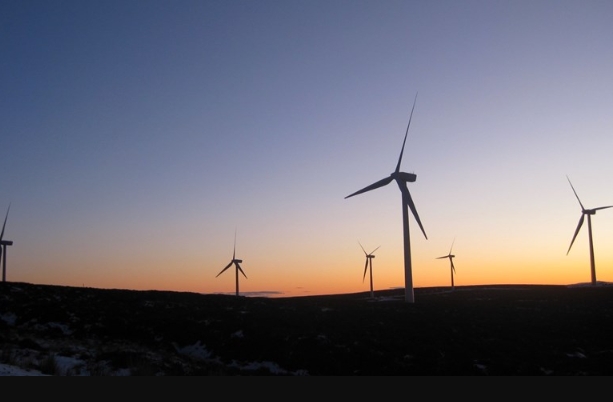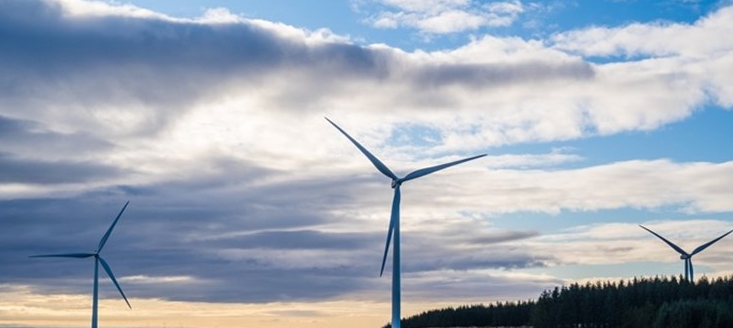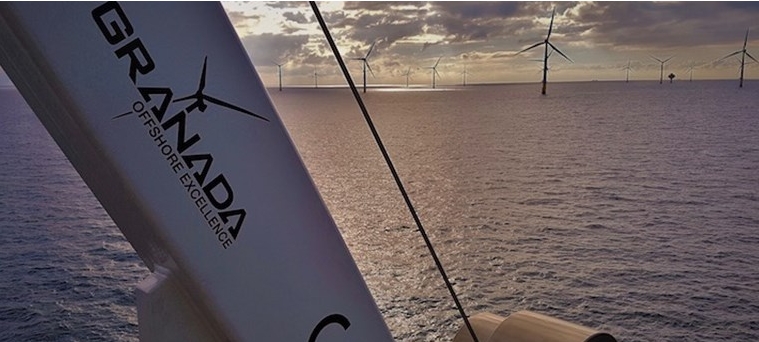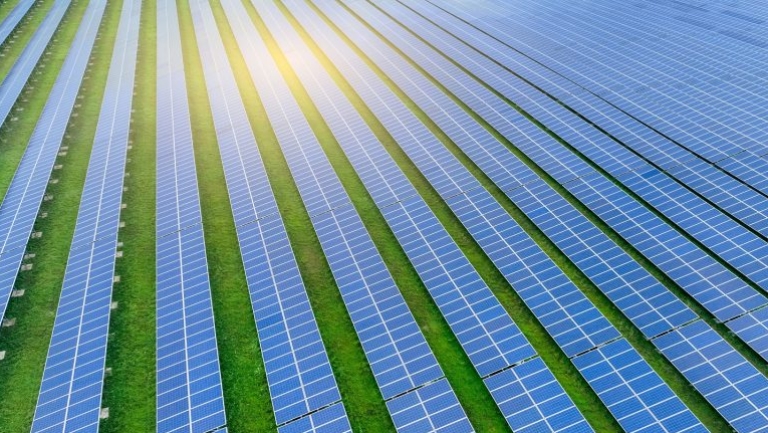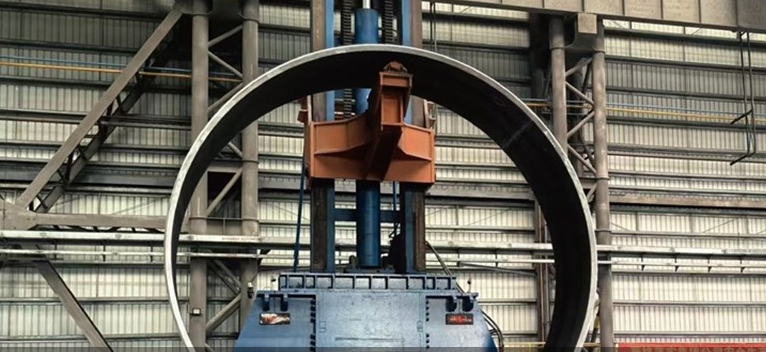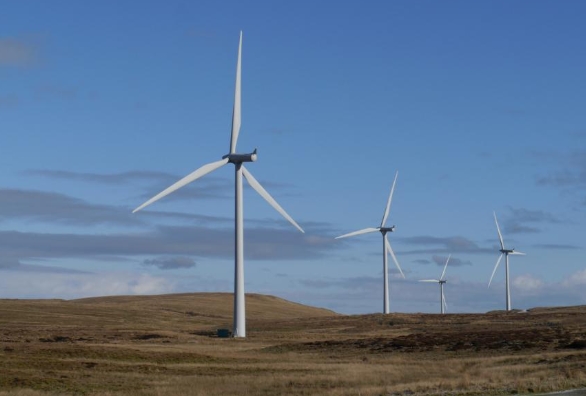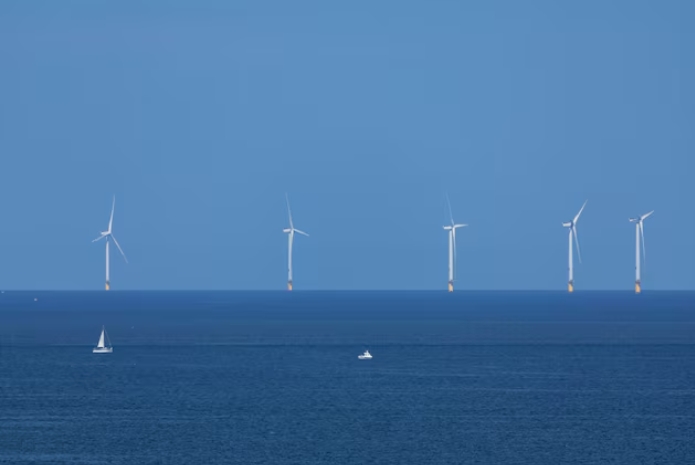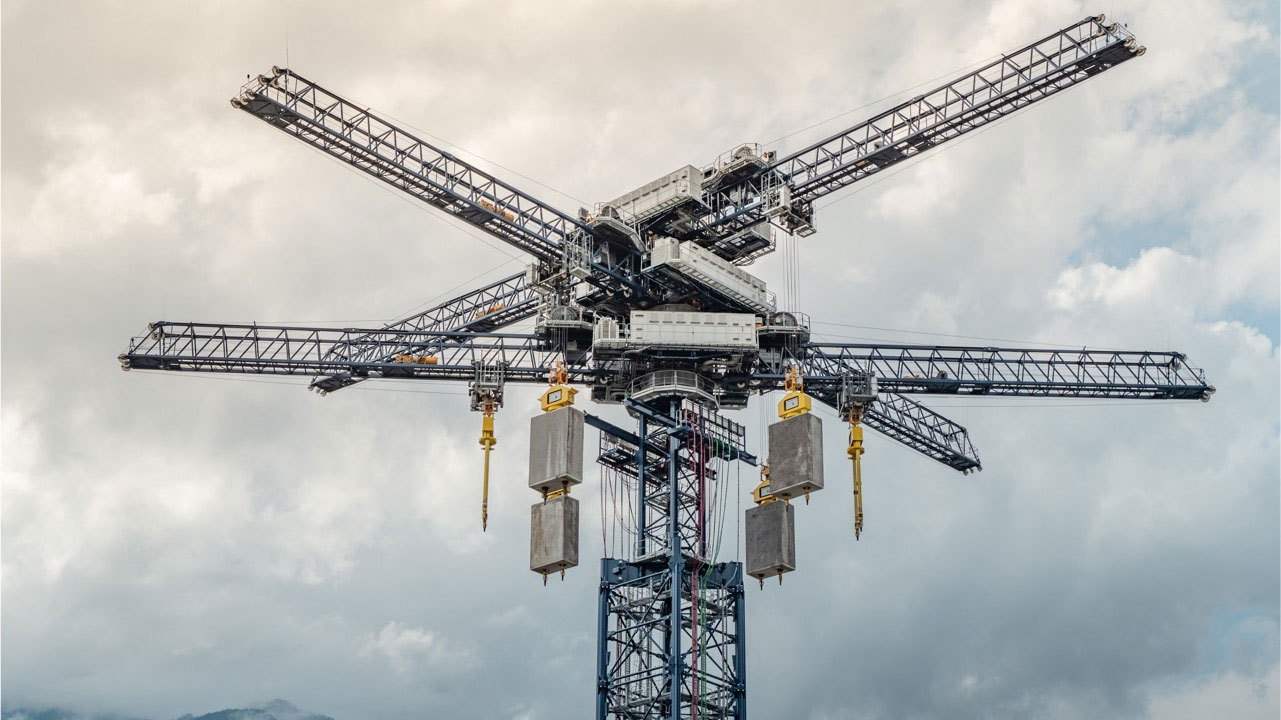 Energy Vault's energy storage systems use gravity to store and release renewable energy on demand, giving grid-scale reliability to clean energy sources in place of fossil fuels. (Courtesy: Energy Vault)
Energy Vault's energy storage systems use gravity to store and release renewable energy on demand, giving grid-scale reliability to clean energy sources in place of fossil fuels. (Courtesy: Energy Vault)A decarbonized grid, powered primarily by solar and wind, will require a lot of energy storage. Lithium-ion batteries, while the technology du jour, won't come close to solving the problem on their own.
The U.S. could need 125-680 GW of long-duration storage capacity —up to 12 hours— by 2050 to support a grid dependent on intermittent renewables, according to research from the National Renewable Energy Laboratory. That's a more than five-fold increase from today's installed capacity.
By NREL's projections, battery storage deployment ranges from 7 to 77 GW by 2050.
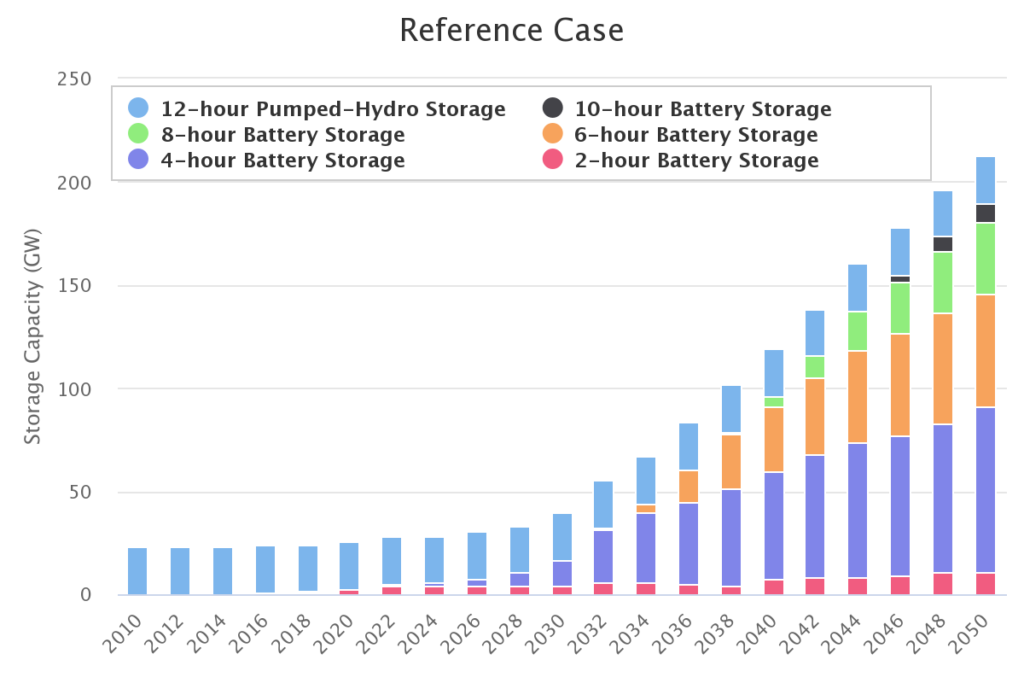
Energy storage projections from the National Renewable Energy Laboratory (Source: NREL)
The long-duration energy storage dilemma is multi-pronged: today's market structures don't adequately reward energy storage of longer than four hours, and potential solutions are mired in technical challenges and steep capex costs.
Nearly all of the installed energy storage capacity in the U.S. today comes from pumped hydro energy storage, which faces sizeable permitting and cost challenges.
One company, however, may have cracked the long-duration energy storage puzzle.
Episode 45 of Factor This! features Robert Piconi, CEO of Energy Vault, a company well on its way to deploying long-duration gravity storage systems at scale.
Energy Vault first made its splash with images that pictured towering cranes lifting and lowering blocks based on the guiding principles that made pumped hydro the world's most significant energy storage resource.
Now, with a retuned concept, the company is deploying its systems in partnership with major players like Enel, and even landed a battery plus green hydrogen deal with Pacific Gas & Electric, California's largest utility.
Can long-duration energy storage finally break through?
The gift of gravity
Robert Piconi's career has taken its share of twists and turns.
He started in conventional energy with Amoco, which later merged with oil major BP in what was at the time one of the largest corporate deals in history. He went on to hold leadership roles with telecommunications giants Bell Labs Lucent Technologies (now Nokia) and Spirent Communications before moving to the world of healthcare diagnostics.
Around 2010, as he was founding and leading his own companies, Piconi began to recognize the value of software and data, and the roles each would play in nearly every facet of society. His path crossed several times with Bill Gross, the serial cleantech entrepreneur and founder of Idealab, who recruited Piconi to run a company of his, though the timing didn't work out.
Gross had spent decades in the solar industry. But he had a newfound interest in energy storage and, in 2017, sought out and recruited Piconi to launch Energy Vault. This time, the timing was perfect.
"We felt the urgency to solve the problem," Piconi said. "Meaning, the time is now."
The problem was that a lot of renewable energy projects were being built to meet the growing threat of climate change. Energy storage would soon become critical, they thought, as intermittent sources like solar and wind replaced firm, dispatchable fossil fuel power plants.
The vision for Energy Vault was shaped by three ideals: 1) Urgency eliminated the opportunity to explore alternative battery chemistries, 2) The solution needed to be scalable in the absence of government subsidies, and 3) Sustainability couldn't be overlooked, as lithium-ion battery systems face safety risks and a vulnerable supply chain.
By 2020, Energy Vault had a grid-connected 35 MWh commercial demonstration unit operating in Switzerland.
"It was really important that we built the first commercial system, not a prototype, and we didn't do it on a microgrid. We interconnected it to a public utility," Piconi said.
The innovative, and unorthodox, design of six standard tower cranes linked together, lifting and lowering composite blocks to store energy, quickly caught the eyes of investors. The company raised $110 million from the Softbank Vision Fund and began listing on the New York Stock Exchange in 2022.
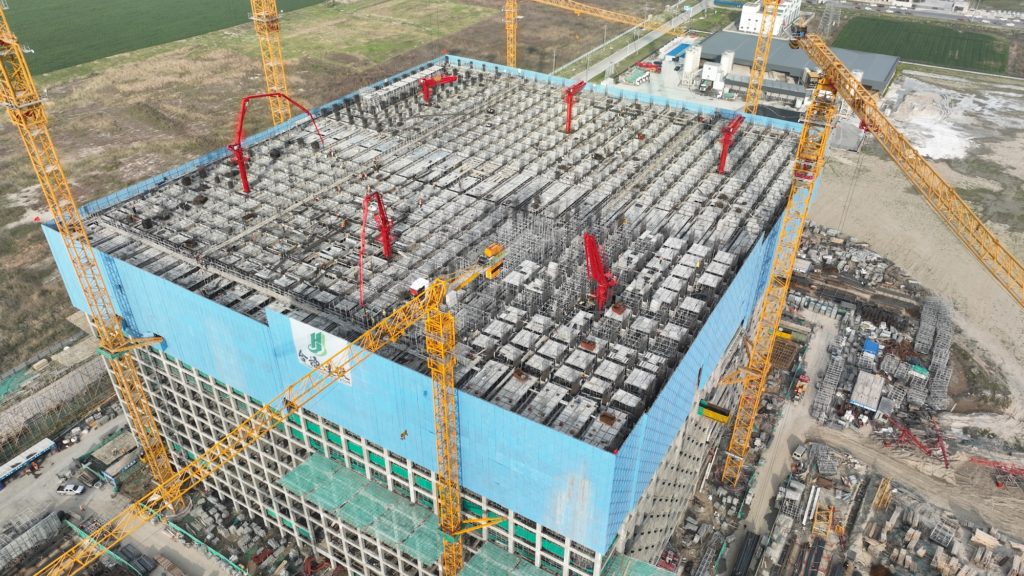
Energy Vault's first commercial gravity storage system, a 25 MW/100 MWh facility in Rudong, China, is 75% complete. (Courtesy: Energy Vault)
Today, Energy Vault's first commercial gravity storage system is 75% complete. The 25 MW/100 MWh facility in Rudong, China is a far cry from the sci-fi-resembling crane assembly, instead opting for a standard building construction that protects against outside elements.
The principles for energy storage, however, remain the same. Composite blocks are moved vertically and horizontally to store energy, guided by advanced software. The facility can be built to meet the specific needs of the customer, including short- and long-duration applications.
Energy Vault's project in China reflects one of the biggest hurdles facing long-duration energy storage. While the facility is capable of providing storage of up to 12 hours, markets don't yet adequately reward the value of longer durations.
The market for long-duration energy storage
For long-duration energy storage systems to compete with lithium-ion batteries, the duration has to exceed four hours, Piconi said. But since utilities are primarily focused on solving two-hour challenges, a market doesn't yet exist for the technology.
That market reality forced Energy Vault to shift strategy. While the company remains widely recognized for its gravity storage system, it's also deploying lithium-ion battery systems with a proprietary string inverter configuration to prevent thermal runaway.
Earlier this year, Energy Vault signed a 2.4 GWh supply agreement with energy storage developer Jupiter Power and won a contract with Wellhead Electric and W Power to supply a 275 MWh battery storage system in Southern California.
Piconi said that based on customer conversations it was clear "that there's no silver bullet in energy storage. Building something to have the flexibility to be able to serve those customers' needs in different ways was fundamental."
A steady cash flow from battery storage has allowed Energy Vault to wait for the long-duration energy storage market to emerge. Piconi acknowledges that it has taken longer than expected.
Additionally, Energy Vault is now licensing its gravity long-duration storage technology— a vertical that offers a 100% margin. Last year, nearly half of the company's $146 million in revenue came from licensing agreements.
About 75% of the gravity system can be built using domestic content. Licensing allows Energy Vault to stay out of the construction business to focus on technology.
For long-duration energy storage companies focused on only one application, "it's going to be difficult," Piconi said. The market will develop, but that could take longer than expected.
A (real) green hydrogen plan
Energy Vault's pursuit of a diversified suite of energy storage solutions led to possibly its most interesting development.
In January, Energy Vault announced a proposed partnership with Pacific Gas & Electric, California's largest utility, to deploy and operate a grid-scale battery plus green hydrogen long-duration energy storage system (BH-ESS).
The BH-ESS would power the downtown and surrounding area of Calistoga in Northern California, for a minimum of 48 hours during planned outages and shutoffs during time of wildfire risks. The system would provide a minimum of 293 MWh of dispatchable energy. Capacity could eventually be expanded to 700 MWh, which would allow it to operate for longer without refueling.
The project is still pending regulatory approval. PG&E submitted the project contract to the California Public Utilities Commission at the end of 2022, with a request for a final approval by May 15.
If approved, construction could start in the fourth quarter, with commercial operation expected by the end of second quarter of 2024. Energy Vault called the project a “first-of-its-kind” and one of the largest utility-scale green hydrogen projects in the U.S.
This "ultra long-duration" project proposal came from Energy Vault thinking creatively about how to design a system that met PG&E's needs, Piconi said. The project would represent the largest long-duration energy storage system built in the U.S. in 2024, and would represent a significant milestone for the nascent green hydrogen industry.
Piconi said he believes the experience of Energy Vault's executive team allowed the relatively young company to emerge successfully from PG&E's proposal process.
"We don't start with, 'Hey, we have this product, let's figure out how to jam it down your throat,'" Piconi said.
